Making beats has become a central part of electronic music production. As there are many ways to approach this process, beginner producers are often faced with numerous questions.
The hot topic seems to be regarding the MIDI controllers, or more specifically- Do you need a MIDI keyboard to make beats or produce music in the first place?
The short answer is no, but there is more to it than that.
In this article, I’ll try to cover some of the misconceptions surrounding this topic and hopefully give you some valuable tips to improve your productions and workflow.
What Is A MIDI Keyboard And What Does It Do?
A MIDI keyboard controller is a device that lets you control software inside your DAW (digital audio workstation).
It may look like a regular keyboard on the outside, but the trick is that it doesn’t make any sound on its own.
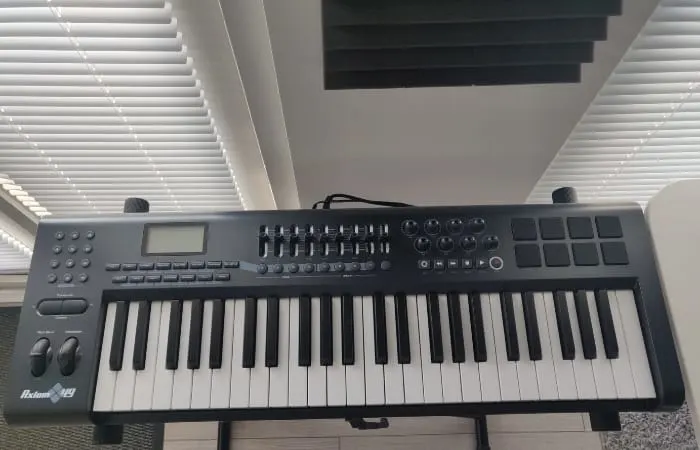
It is built to be used in conjunction with your computer and most of the time is connected via USB.
So basically, the sound is generated inside your software, and the MIDI keyboard is simply sending MIDI data that tell your software what to play and at which volume (velocity).
This is why it is often called a MIDI controller.
To put it simply – you load an instance of, let’s say, a piano VST in your DAW, and you use your MIDI keyboard to play it in real-time.
If you happen to have a nicely sampled piano software, you’ll pretty much have the same feeling of playing the real thing.
Most keyboards nowadays have touch-sensitive keys, so if you play harder or software will react accordingly. This adds to the authenticity and expressivity while playing a virtual instrument.
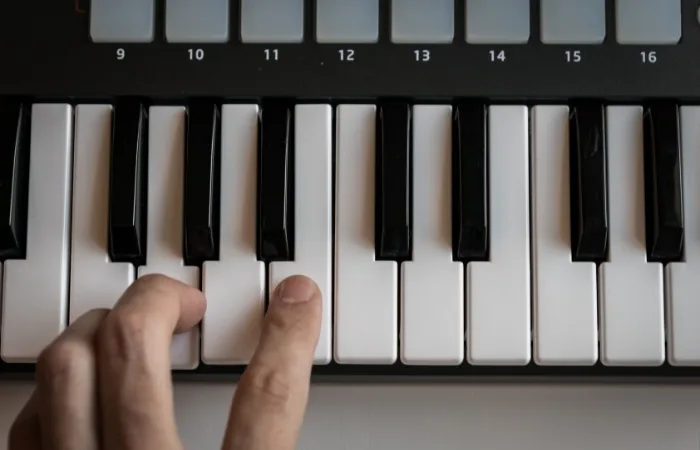
The biggest advantage of a MIDI keyboard versus a real piano is the versatility that comes with modern technology.
With a MIDI controller, besides the digital piano, you can virtually (pun intended!) play any musical instrument as long as someone has sampled it in a digital domain.
It might seem weird at first, but you can even use your MIDI keyboard to trigger drum samples and create beats that way.
Although pressing keys to trigger drum samples is perfectly fine, it might not be appealing to some producers, so manufacturers have included drum pads together with the keys.
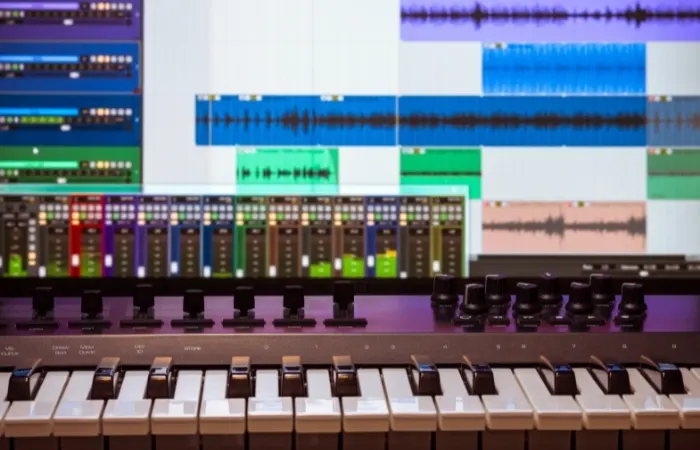
They basically act the same; the only thing that changes is the feeling when triggering drum samples. Some prefer this way over the keys as it feels more similar to playing a real drum kit.
Additionally, some keyboards come equipped with additional knobs and sliders that can be assigned to control different parameters of your VST in use.
That way, you can control an overall velocity threshold for your samples or cut-off frequency of filters, etc.
Couple this with velocity-sensitive pads, and you can see how powerful a MIDI controller can be when it comes to producing beats. You can easily program realistic-sounding hi-hats, record beats in real-time, and even do sound design, all on a single device.
But the list of potential benefits doesn’t end here.
Here are some of the reasons why you may want to consider getting yourself a MIDI keyboard:
Using A MIDI Controller Can Be Inspiring
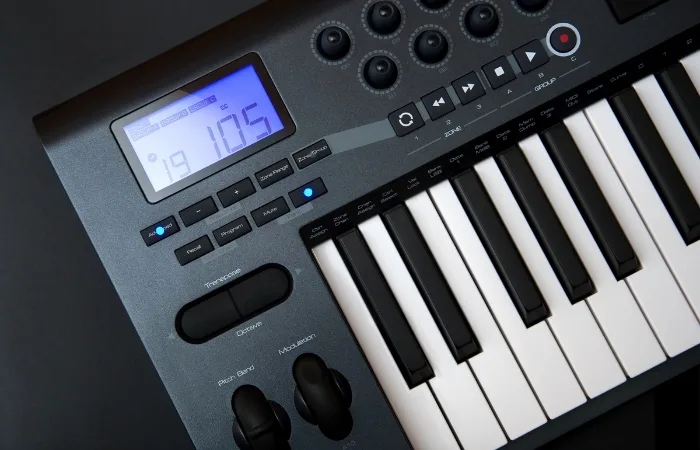
If you happen to have a limited time frame dedicated to making music, any source of inspiration is welcome and valuable.
Having a MIDI controller in your studio can be preferable compared to a plain mouse and a keyboard.
The latter feels more like a desk job rather than a place to unleash your creativity. It might seem trivial, but little things like these can make an enormous impact on the way you approach making music or even your desire to create something in the first place.
If you happen to have a cool-looking controller keyboard with some nice lights and flashy knobs, it can add a sense of wonder and beauty to your songwriting sessions.
Of course, this might not have the same effect on everyone, but I’d say it’s important not to underestimate the power of beautiful spaces and their effect on our inspiration.
It Can Add More Groove To Your Songs
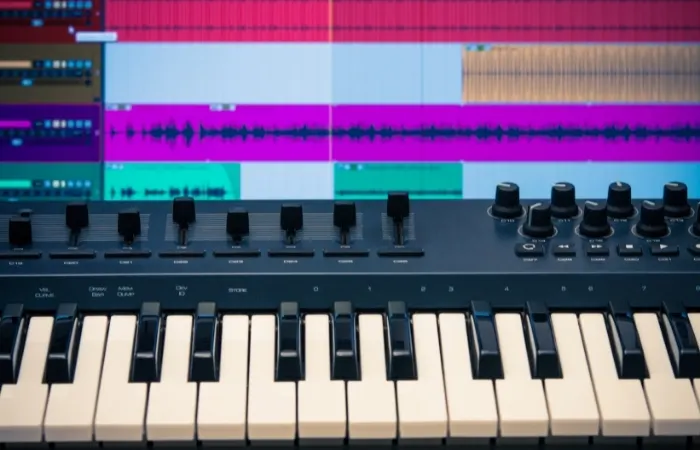
While electronic music does utilize a lot of quantization, and having a rock-solid beat is a major part of the genre, having some tiny “mistakes” resulting from you performing the parts rather than programming them can sometimes enrich the song than take away from it.
This is especially true when it comes to hi-hat grooves.
Sometimes, having the hi-hat pattern fully quantized can sound a bit too stiff and not suitable for the song you’re working on.

In such cases having that part performed through the MIDI keyboard or a MIDI drum pad can mean a world of difference.
You might want to add an acoustic drum loop in between your regular electronic sound pallet in other scenarios.
In such instances, you may want to leave the whole part unquantized, exactly the way you’ve played it.
All of this is entirely possible to do without the keyboard, but using it means you’ll do it a lot faster and easier.
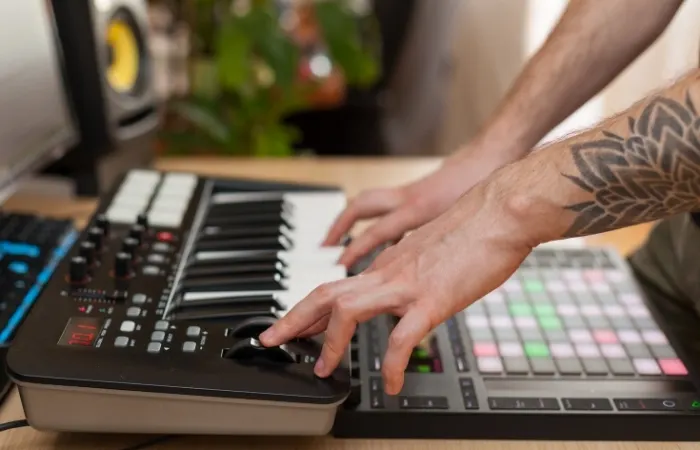
Additionally, having parts performed by you rather than programmed can make you feel more connected to your songs. You could have a greater sense of achievement before your finished projects by knowing that you have actually played every single part there is in a song.
It does sound a bit out there, but it might be something to consider if you value a human touch to electronic music.
It Can Make Auditioning Easier
Trying out different drum samples can be a crucial step in getting your drums to sound exactly the way you want them.
With a MIDI keyboard, you can do so in a nice convenient manner.
The trouble is, we can’t tell for sure if a certain sound will work based on listening to it solo, without any context. A snare might sound horrible on its own, but within the context of the groove and the song, it might be just the thing you need.
Without a keyboard, you would waste a lot of time trying to see if you got your sound pallet right.
You would have to enter MIDI notes manually and press play whenever you wanted to hear the sample in action. This is a tedious process that could potentially put you off from further working on songs.
What’s also cool is that you can work on your ideas on the fly.
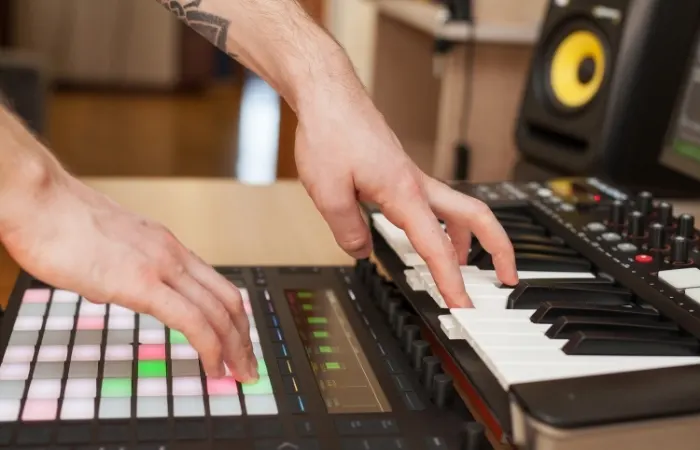
You can immediately try things out and modify parts accordingly.
This can also speed up your songwriting process as you are directly transferring your ideas onto the keyboard.
And when it comes it creating beats, it can help you get them to the next level of excitement and subtle complexity.
We usually start simple, with a steady kick on downbeats and a snare on 2&4, but this can often sound boring fast.
We want to spice it up with some cool hi-hat patterns or a tom hit here and there.
This is where having a MIDI device becomes essential.
While having the initial beat on the loop, we can try out different patterns on top of it and see how they correspond. This way, we might come up with something we would never have otherwise.
Is MIDI Keyboard Necessary In Order To Make Beats?
Having just gone over the many advantages of MIDI keyboards and MIDI controllers in general, it’s a good time to ask the fundamental question of this article- do you actually need all of this to make awesome beats and music in general?
The answer is – absolutely not.
Regardless of how much MIDI controllers speed up the workflow and make the writing process convenient, you can still produce amazing beats without one.
So, how do you do that?
There are two ways to approach making beats without the use of a keyboard – you can either enter MIDI notes via mouse through a piano roll or use your computer keyboard as a MIDI controller.
Manually Entering Notes Through The Piano Roll
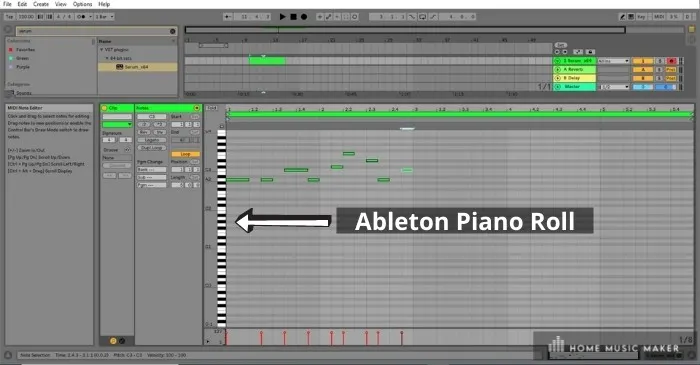
All of the DAW’s have a unique note view that’s usually referred to as piano roll.
It’s called so because of the piano notes that are spread in a vertical line. You can use your mouse to manually enter notes on the piano roll and determine how long they will last.
Additionally, if you want to audition the sound of your VST, you can do so by simply clicking any of the keys on the piano roll.
You might have a hard time getting used to this way of working at first, but eventually, you’ll become really comfortable with it and work just as fast as you would with a MIDI controller.
There are some drawbacks to this method, however, as you are not able to perform any task in real-time- you have to enter a note first and then determine if it’s something you like or not.
After a while of doing it this way, you’ll get really good at reading the piano roll, so you’ll have a fair idea about how something sounds even before you listen to it, but it does take a while.
If you want to have access to manipulating your drum samples and libraries in real-time, you can actually do so with a common computer keyboard.
Using A Computer Keyboard As A MIDI Controller

Many DAW’s have the option of using your computer keyboard as a MIDI controller. It’s a free and convenient way of accessing all the benefits a MIDI controller has to offer.
The exact procedure of using it will vary from DAW to DAW, but a general method is to load an instance of a QWERTY keyboard and route it to a VST you want to use.
By pressing a corresponding key on the keyboard, you can trigger a sample assigned to the particular note.
However, this workaround comes with some limitations.
You can generally only play one octave at a time. You do have the option of switching octaves, but it’s tough to use in real-time.
You also won’t have the ability to control the velocity of the played notes, and they’ll all have the same fixed value. You can manually adjust velocities later on, though.
FAQ – DO YOU NEED A MIDI KEYBOARD TO MAKE BEATS?
Is it easier to make beats with a midi keyboard?
I would say so. A MIDI keyboard makes a whole process more enjoyable, streamlined, and most importantly, in real-time. That is not to say that you can’t effortlessly make beats without one, but it is easier to get accustomed to it.
Can you use a computer keyboard as a midi controller in FL studio?
Yes, FL studio is one of the DAWs that support this function.
What midi keyboard should I get for music production?
Even the most basic MIDI functions are enough to get you started. This includes at least two octaves of keys and a CC controller slider. You might also want to consider getting velocity-sensitive keys, but most newer models have that function anyway.
How do you set up a midi keyboard and connect it to your computer?
If you are using a newer generation of MIDI keyboards, all of them operate through a USB port. So you basically connect your keyboard via USB cable to the computer and wait for the drivers to install it themselves. After that, the keyboard should be fully functional. If you have an older model that doesn’t support a USB connection, you’ll need a MIDI cable and a MIDI interface or audio interface to get it working.
Should I buy a midi keyboard or a keyboard that has a midi port?
If you are planning on strictly using the keyboard to control your virtual instruments, I will go for a USB midi keyboard. It’s easier to hook everything up and get to work. However, if you want to use it for gigging purposes, you might want to go for a regular keyboard that supports MIDI connections.
Do you need to know how to play piano to use a MIDI keyboard?
Not necessarily. You can use it to record some simple melodies and layer beats. In such a case, piano skills won’t be as crucial.
Are midi keyboards good for beginners?
I’d say they are even better for beginner producers as they make the whole process a lot more intuitive and easier to set up. Otherwise, you’d have a much steeper learning curve while trying to familiarize yourself with all the functions in your DAW.
What are the basic devices that are required in order to create a perfect beat?
First of all, you need a DAW. You’ll most probably find all the devices you need, like a sampler and some drum sample packs in it. If your DAW doesn’t have any drum samples, you can easily find them online for free.
What is the best DAW for a beginner to learn music production with?
I heard many positive comments about FL studio. It seems to me that most of the beginner producers find it very easy to work in it.
Final Words
When it comes to making beats, ultimately, you don’t need a MIDI keyboard, although, as we discussed, there are clear benefits.
Personally, I couldn’t be without one, as they help me be much more creative when getting down ideas, plus help with my workflow.
You can get yourself a decent MIDI controller relatively cheap, and in most cases, it one of the first pieces of studio gear that people buy.
And it’s easy to see why!


 Want to connect with other music producers for help and guidance?
Want to connect with other music producers for help and guidance?